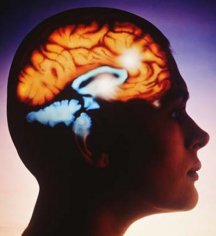
It's believed that our brain is capable of receiving information about the world around us, processing it, and making decisions, not necessarily the right ones. Some scientists believe the brain stores approximately 15 trillion pieces of data. However, other studies suggest that the brain isn't always the source of information, nor is it always capable of controlling our actions and behavior.
Lies of the mind
A sensational discovery by scientists was the fact that our brain, it turns out, is capable of deceiving us. It does this, let's say, unintentionally, because it has to work hard. When force majeure circumstances arise in our lives, our brain is forced to produce an “emergency response” to help us get out of the situation. It usually doesn't have time to search for the perfect solution. It seeks the shortest path, often creating the illusion of the right solution, creating deception for its own and our benefit, and allowing for mistakes in the process.
We need to try to understand how our brain works, and then we can analyze which of its decisions we can rely on and which ones can be misleading.
Our brain receives some information through our senses. Even when we're quietly relaxing alone in our favorite room, our brain receives a wealth of information about the surrounding reality. We might not notice, but it will inevitably store patterns on the wallpaper and carpet, the sounds of traffic outside the window, and snippets of conversations in the recesses of our memory. Later, you might find yourself in a state of déjà vu – “this has happened to me before.” Remember Shurik's adventures in the film “Obsession”? He had absolutely no memory of having been in this apartment before, yet his brain helpfully began to feed him seemingly unnecessary details: the chimes of the clock, the ticking of a watch, the sound of a door closing. Such details are generally unnecessary, and the brain eventually discards them as unnecessary, but at some point they can surface from the depths of memory.
This brain principle is often exploited by lawyers. Thanks to the film industry, we've all seen witnesses being questioned in a case: their testimony is often unreliable because they believe they saw more than they actually did. Lawyers, however, provoke them to “remember” some detail that never actually happened. By refuting it, they discredit the testimony, and the witness is no longer credible to the investigators.
Moreover, our brain is designed to often choose between precision and speed. It typically chooses the latter, interpreting events based on empirical rules, which aren't always logical. When it's not a matter of making instant decisions, it can process data slowly and meticulously, as it does when solving crosswords or math puzzles.
When our brain deceives us, it does so in a way that makes us believe it. If it doesn't have all the information, it will fill in the gaps with other data from memory. This creates the impression that the picture was obtained from some external source, when in fact, it is a mosaic skillfully assembled by our brain.
The brain can't think?
During the 16th World Congress of Philosophy, held in Düsseldorf in 1978 and attended by 1,500 scientists from 60 countries, Australian neurophysiologist and Nobel Prize laureate in Physiology or Medicine Eccles John Carew proposed the hypothesis that the mechanisms of brain activity are driven by a “psychic principle” located outside the human body. This principle had previously been formulated by scientist, surgeon, doctor of medical sciences, and professor Valentin Felixovich Voino-Yasenetsky (1877-1961).
The idea that our consciousness can exist outside the brain has also been supported by the Dutchman Pim van Lommel and the British scientists Sam Parnia and Peter Fenwick, all world-renowned scientists. The hypothesis itself is that the brain is only a part of the human body, composed of cells, and therefore cannot think, but rather serves as a kind of transmitter for thoughts. After all, medicine has encountered cases where people suffered seemingly irreparable brain damage, but this did not prevent them from living a full life.
Seventy years ago, American doctors Jan W. Bruel and George W. Albee performed surgery to remove the right half of a patient's brain. The 39-year-old man recovered quickly from the surgery, and his mental abilities remained unchanged. Other luminaries of medicine, Pyle and Gould, removed a tumor from the patient's brain, leaving an 11-centimeter depression in its place. There were also no health consequences.
The internet is also currently awash with similar stories. For example, 25-year-old Carlos Rodriguez lives in Miami. His photo appeared online after he failed to pay a police fine for having sex with a prostitute. According to media reports, this man is completely brainless, but that doesn't stop him from living a full life and even committing crimes.
At the beginning of the last century, the Russian doctor A. Buquet described similar cases. Specifically, he cites the example of a brain operation on a boy who had been wounded in the back of the head with a rapier: the bone was shattered, the meninges were open, and the brain was leaking freely through the wound. Despite doctors' predictions, the boy recovered. Three years later, he did die, but not from the head wound. However, when the doctor performed an autopsy, it was discovered that the child had no brain at all.
In 1888, a sailor was brought to a New York hospital after a sharp bridge beam had severed the entire top of his skull. He regained consciousness during the operation and returned to work two months later. He then served in the navy for 26 years without any problems.
Professor Hufland treated a completely normal person, but when he opened his skull after his death, instead of a brain, he found 330 grams of water there.
Of course, all of these examples could simply be dismissed as happy coincidences or exceptions to the rule, but they nonetheless force us to question traditional notions about how our brains work. After all, even a state-of-the-art car can't run without an engine, just as a computer won't turn on without a hard drive. So perhaps we're misjudging our own brains. If not, then we're left with the assumption that the patients described aren't people at all, but biorobots, implanted into our environment for some purpose.
Interesting facts about the brain
• Human memory comes in three types: sensory, long-term, and short-term. Long-term memory functions like a computer's hard drive, while short-term memory resembles a small storage device capable of holding no more than 5-9 objects in the brain. Incidentally, this is why most countries have 7-digit phone numbers.
• The most visible color of the spectrum to the brain is yellow-green, or chartreuse. Our eyes are capable of perceiving blue, green, and red. The brain distinguishes the difference between light and dark, as well as the difference between colors. This is why the brain's receptors see the middle of the spectrum, chartreuse, most clearly.
• One study involved people looking at a complex picture and having to determine what it depicted. Most of the answers were correct. The second group was given a lot of time to think about how to solve this task. Only a few gave the correct answer… The subconscious is smarter than we are.
• The brain does not tire from mental work. It has been proven that the composition of the blood flowing through the brain does not change during active activity. However, blood taken from the vein of a tired person contains “fatigue toxins.”
• Prayer has a beneficial effect on brain function. During prayer, information enters the brain without going through thought processes, allowing a person to detach from reality. During meditation, the brain produces delta waves, which is why scientists believe religious people are less likely to get sick and recover more quickly.
Tricks of our brain
Dr. Ramachandran, director of the Center for Brain and Cognition at the University of California, is known by his fellow physicians as the “Marco Polo of neurology.” He is also one of Newsweek magazine's 100 People Who Will Change Life in the 21st Century.
In his research into the brain, Dr. Ramachandran explores the mechanisms by which the brain deceives us. He discovered visual illusions—they're easy to find on the web, revealing that we're seeing something completely different from what's actually depicted. Furthermore, Dr. Vilayanur Ramachandran discovered a neurological condition he called Capgras syndrome. This syndrome causes a person to believe, for example, that their wife isn't their wife at all, but an impostor who looks very much like her. Another of the doctor's discoveries is phantom limb syndrome. It manifests itself when a person who has had a limb amputated experiences pain in that limb. Incidentally, in one episode of the series about Dr. House, the doctor treats phantom limb pain using a mirror. This method is real, discovered by Ramachandran, and can also be used to facilitate rehabilitation after a stroke. The doctor's third discovery concerns another neurological phenomenon: synesthesia. The name comes from the word “synesthetic,” which refers to a person who “sees” the color of sounds, “hears” sounds when they see silent movement, and associates days of the week with specific people.
Research has shown that the brain is not a structure that is formed once and for all, but a system that develops throughout our lives, and is not at all alien to what was considered to be inherently human qualities – a slight deception for the benefit of the entire organism.





